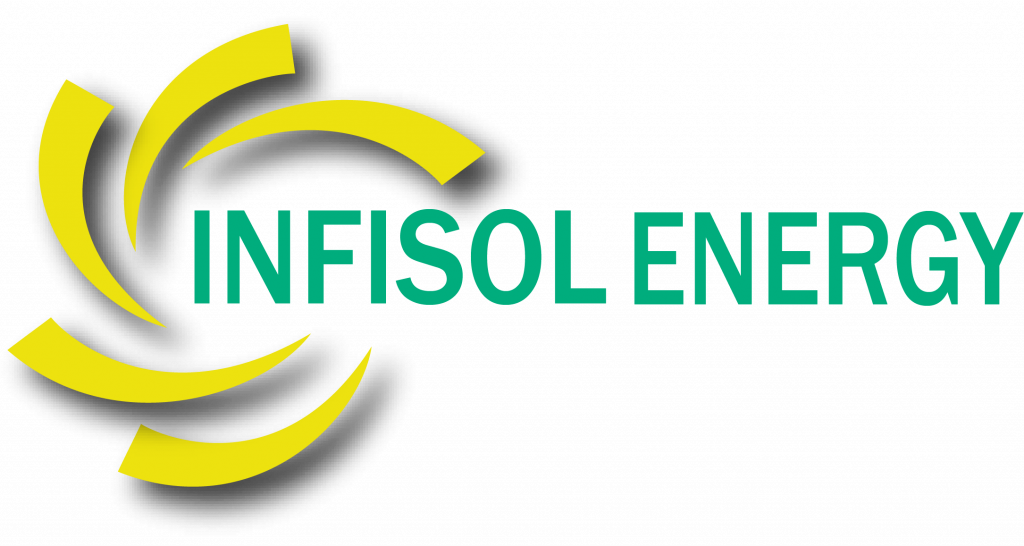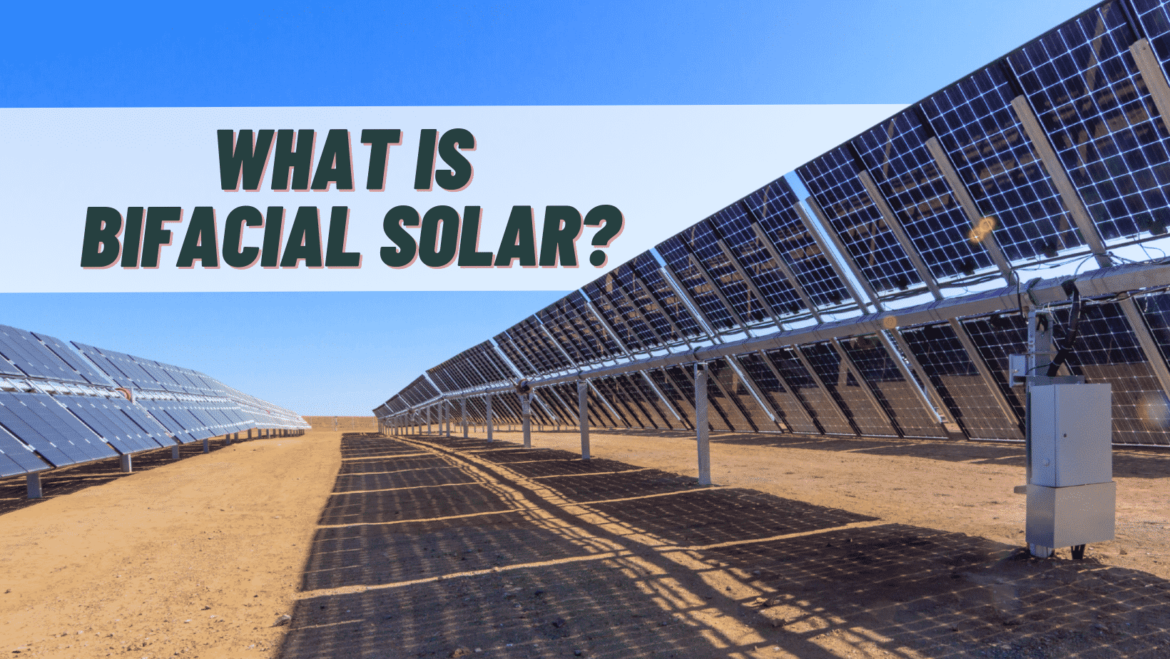Table of Contents
What is a Bifacial Solar Module?
A bifacial solar module is a photovoltaic panel that generates electricity from both the front and back of the solar cells. This is in contrast to traditional solar modules, which only generate electricity from the front of the solar cells.
Talking about their designs, there are basically two types of bifacial panels. The first one comes with a glass-to-glass design and another has a transparent back sheet instead of glass on the second side.
How do bifacial modules work?
Bifacial means two faces, out of which the upper face will work similarly to that of mono facial solar panel, where it will absorb direct sunlight. Now comes the role of the additional second face. This surface absorbs the reflected sunlight from the ground or roof. However, to increase the power output of the bottom side, consider painting the roof with white or silver paint for maximum reflection of sun rays on the module from the ground surface of the roof.
How to install bifacial modules?
You can’t just go and install these modules directly on the roof. As these modules have two sides for light absorption, they need to be installed with some elevation and proper inclination. To install bifacial modules, try to avoid installing them directly on the roof. Instead, you can consider using them for a minimum 4 feet height structure which is costly to design, but you can use the surface for other uses.
How do bifacial solar panels help in increasing power output?
To get more power output, one should install bifacial solar panels in a tilted fashion with a particular angle. Here are some benefits of installing them in a tilted way rather than parallel to the roof similar to mono facial modules.
- It will allow more radiation to pass through the bottom side of the panels.
- In cloudy days, these panels are more effective because of more radiation because of less direct sunlight.
- Based on panel placement, there will be two energy peaks in a day because we are allowing them to capture sunlight from both sides.
What are the advantages of bifacial modules?
- More efficient
- Durability
- Placing
- Cost-effective
- 15 to 20% Increased Efficiency
- Aesthetically Pleasing
- Works Well in Diffuse Light
- Reduced PID
- Longer Warranties
- More Efficient:
Bifacial solar panels are designed to capture sunlight from both the front and rear sides, allowing them to generate more electricity compared to traditional monofacial panels. This increased efficiency results in higher energy production for the same surface area. Bifacial panels are particularly advantageous in locations with reflective surfaces, such as snow, sand, or light-colored rooftops. - Durability:
Bifacial solar panels are typically built with robust materials and construction techniques, making them durable and long-lasting. They can withstand various weather conditions, including hail, snow, and high winds, ensuring a longer lifespan and reduced maintenance costs. - Optimal Placement:
Bifacial panels offer flexibility in terms of installation. They can be mounted vertically or at an angle, allowing for more efficient use of available space. This versatility makes them suitable for a wide range of applications, including ground-mounted arrays and building-integrated solar systems. - Cost-Effective:
Despite their higher upfront cost compared to monofacial panels, bifacial solar panels provide better value over their lifetime due to increased energy production and durability. The additional energy yield and longer lifespan can lead to a quicker return on investment and lower overall cost per watt. - 15 to 20% Increased Efficiency:
Bifacial panels can achieve a significant boost in efficiency, with some estimates suggesting an increase of 15% to 20% in energy production compared to monofacial panels. This makes them an attractive option for maximizing energy output from a given installation area. - Aesthetically Pleasing:
Bifacial panels are designed to be visually appealing, making them an excellent choice for residential and commercial installations. Their sleek and modern appearance can enhance the aesthetic appeal of buildings and landscapes while generating clean energy. - Works Well in Diffuse Light:
Bifacial panels are effective in low-light conditions, making them suitable for regions with frequent cloud cover or indirect sunlight. They can capture light from various angles, ensuring consistent energy production throughout the day, even under less-than-ideal weather conditions. - Reduced Potential-Induced Degradation (PID):
Bifacial solar panels often exhibit lower PID susceptibility compared to monofacial panels. PID can cause a decrease in the overall performance of solar panels over time. Bifacial panels are engineered to minimize this effect, resulting in more reliable and long-term energy production. - Longer Warranties:
Many manufacturers offer extended warranties for bifacial solar panels, reflecting the confidence they have in the durability and performance of these panels. Longer warranties provide peace of mind to customers and ensure that their investment is protected for an extended period.
What are the challenges of using bifacial modules?
At the core of bifacial solar technology lies the ingenious strategy of capturing sunlight not only from the front surface of the panel but also from its rear side. This dual-sided absorption capability sets bifacial modules apart from their unifacial counterparts, resulting in increased energy production and improved overall efficiency.
Anatomy of Efficiency: How Bifacial Modules Work
Bifacial solar modules operate on a simple yet effective principle. While the front side of the panel absorbs direct sunlight, the rear side benefits from the sunlight reflected off surrounding surfaces such as the ground, adjacent structures, and even clouds. This dual exposure amplifies the electricity generation process, particularly in environments with high albedo characteristics, like snow-covered landscapes or areas with light-colored ground surfaces.
Challenges and Innovations
Shaping Shadows: Overcoming Shading Challenges
While bifacial modules excel in capturing reflected light, they are susceptible to potential shading-related losses on the rear side. To mitigate this concern, innovative panel designs and optimized layouts have emerged. These solutions involve elevation adjustments, increased spacing between panels, and the incorporation of tracking systems that dynamically orient panels to minimize self-shading and maximize energy intake.
Precision in Predictions: Modeling Bifacial Performance
The dynamic nature of bifacial panels calls for accurate performance prediction models. Researchers are actively refining simulations that consider various factors, including local weather patterns, ground albedo, and panel tilt angles. Such predictive models assist in designing and optimizing bifacial solar installations, ensuring optimal energy gains and informed decision-making.
Comparing Bifacial Modules to Other Solar Panel Technologies
As we explore the realm of solar energy, it’s worth considering how bifacial solar modules fare against other photovoltaic technologies. Unifacial solar panels, the conventional players in the solar field, have long been the go-to choice for many installations. While they offer simplicity and familiarity, their limitation lies in their one-sided energy absorption. This constraint means they are unable to capitalize on the reflected sunlight, putting them at a distinct disadvantage when compared to the dual-sided efficiency of bifacial modules.
Thin-film solar panels, another innovative contender, present unique advantages but also face their own challenges. These panels are lightweight and flexible, enabling integration into unconventional spaces. However, their efficiency is generally lower than traditional crystalline silicon-based panels, which can limit their viability for energy-intensive applications.
A Glimpse into the Solar Future: Teaser for Next Blog
The journey of solar innovation doesn’t halt at bifacial solar modules. Excitingly, the horizon promises even more groundbreaking advancements in photovoltaic technology. In our next blog, we’ll delve into the realm of transparent solar panels, a technology that integrates seamlessly into windows, facades, and even electronic devices. Imagine harnessing solar energy without compromising aesthetics or functionality. Stay tuned as we uncover the transformative potential of transparent solar panels and their role in redefining how we envision solar power integration.

